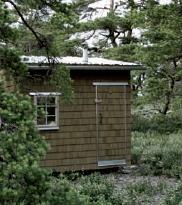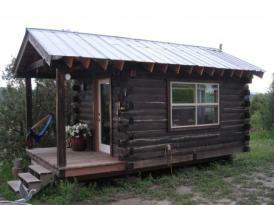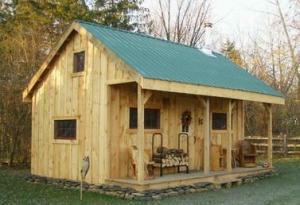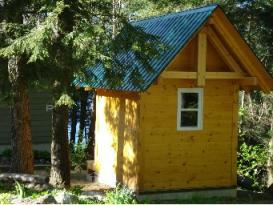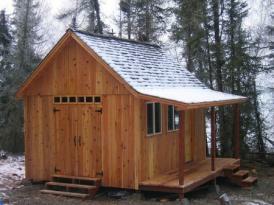The solitary’s comfort is the niche, the corner, the cell, the room — even when contained in a flat or house. Personal space is configured around the familiar, that which is assigned meaning. What is evoked here? The primordial womb? Or simply a projection of the inner self, the dream-self, the self in which we have necessarily invested so much time and energy, literally a lifetime? A vanity? This self we have nurtured like a small and fragile thing, separated from the world, an endangered species but not an egoism, is just a humble sentience. So should its dwelling be.
Historically, the hermit pursued a physical setting with great deliberation. A cave was just so, likewise the hut or the spot in the forest. The 13th-century Japanese writer Kamo no Chomei identified the ideal hut as a ten-foot square hut (article). And that remains an ideal for most solitaries, even if it is “contained” in a house.
In all possible hermit dwellings, it is simplicity — a creative simplicity actively reducing the conventions of the world to their essential solitude — that reigns in design, style, space, and functionality. The effort at making a dwelling is more conscious and deliberate than that of any commercial and worldly designer or architect motivated by wealth, pretension, security fears, or status. So many sources on small living or simple living nowadays disappoints the solitary because they concretizes — literally — the very soul of the aspirant for solitude, silence, simplicity, and naturalness with their monstrous boxes for a mindless mass intent on living for what is external to themselves. But, fortunately, many other sources today value the appropriateness of simple living and small dwellings.
Here are just a few dream-huts that I have come across to inspire eremitism. They actually exist and are made to order by their designers, usually small entrepreneurs. (BTW, the Jamaica is not from the Caribbean island but from Jamaica, Vermont! And the Better Barns cabin is supposed to be a barn!). There are many other hut designs out there, but these catch one’s attention because they are so deliberate in simplicity of design, and could easily accommodate a modern-day Kamo or hut-dreamer.
